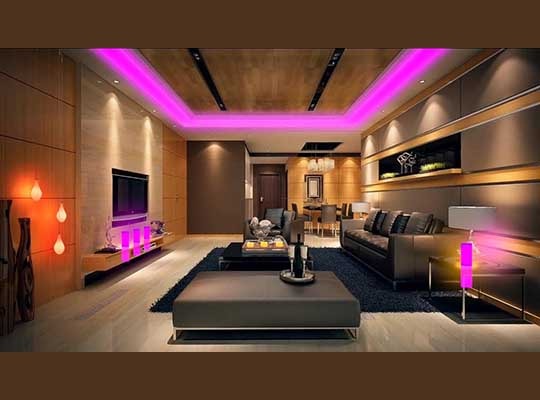April 22, 2020 – The global smart lighting market is expected to generate revenue worth $8.68 billion in 2018, and is projected to reach $38.68 billion by 2026, to register a CAGR of 20.5% during the forecast period. Smart lighting is designed to manage luminance using remote controls. Smart lighting ensures energy efficiency and includes automated control and highly efficient fixtures, which can adjust depending on conditions, such as occupancy and external lighting. Lighting is an intentional use of light to add practical and aesthetic effect to a space. Furthermore, these systems include general, accent, and task lighting. Besides this, smart lighting systems ensure lower energy usage and high cost savings.
The dynamics such as rise in demand for intelligent street lighting systems in developing and developed nations, growth in need for energy-efficient lighting systems for sustainable development, and high penetration of LED bulbs and lightnings, globally, drive the global smart lighting market. However, high installation cost and maintenance cost in smart lighting hamper the market growth. Furthermore, advancement in wireless communication technology, growth in developments of smart city projects, especially in Asia-Pacific, and emergence of IoT technology for smart lightning is expected to provide lucrative opportunities for the market growth.
The smart lighting market is segmented on the basis of offering, connectivity technology, lighting technology, application, and industrial vertical. Depending on offering, it is bifurcated into hardware and software. By connectivity technology, it is categorized into Bluetooth, Zigbee, WiFi, and DALI. On the basis of lighting technology, it is classified into LED, Halogen, incandescent, Fluorescent, and CFL.
The applications covered in the study include indoor and outdoor lighting. By industrial vertical, it is segmented into commercial, residential, industrial, automotive, and others. Region wise, it is analyzed across North America, Europe, Asia Pacific, and LAMEA.
Key players analyzed in the report include Acuity Brands, Inc., Cisco Systems, Inc., Cree, Inc., Eaton, Deco Lighting, Inc., Dialight, General Electric, Honeywell International Inc., Koninklijke Philips N.V., and Syska. These players have adopted various key strategies such as product launch, collaboration, partnership, acquisition, and agreements to drive the market and increase their net sales.
Furthermore, prominent strategies such as product launch and business expansion are adopted by leading players to strengthen their business reach and position in the global smart lighting sensor market. For instance, Philips Hue wireless lights, Hue light bulbs, use approximately five times less energy compared to traditional halogen light bulbs, which makes them eco-friendlier.
KEY MARKET SEGMENTS
By Offering
• Hardware
• Software
By Connectivity Technology
• Bluetooth
• Zigbee
• WiFi
• DALI
By Lighting Technology
• LED
• Halogen
• Incandescent
• Fluorescent
• CFL
By Region
• North America
o U.S.
o Canada
o Mexico
• Europe
o UK
o Germany
o France
o Russia
o Rest of Europe
• Asia-Pacific
o China
o India
o Japan
o Australia
o Rest of Asia-Pacific
• LAMEA
o Latin America
o Middle East
o Africa
Key Market Players
• Acuity Brands, Inc.
• Cisco Systems, Inc.
• Cree, Inc.
• Eaton
• Deco Lighting, Inc.
• Dialight
• General Electric
• Honeywell International Inc.
• Koninklijke Philips N.V.
• Syska
Get Access to sample pages @ https://www.trendsmarketresearch.com/report/sample/13444
















